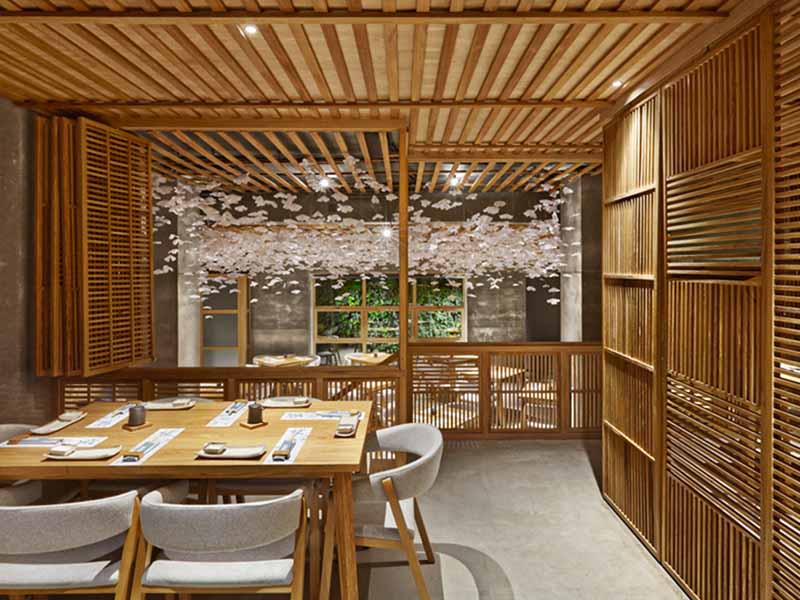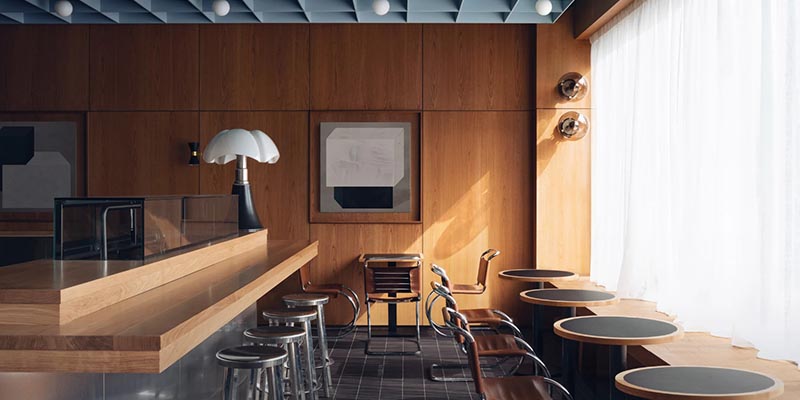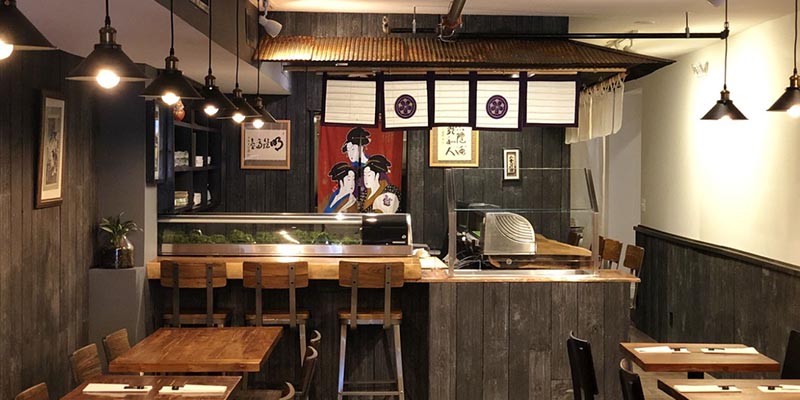Japanese restaurants are known for their calm and relaxing ambiance. From natural elements to soft lighting, these restaurants provide a quiet break from the hustle and bustle of the city. However, small restaurant owners need help to achieve such an atmosphere. Explore practical options to maximize your space while creating a relaxing dining experience. Here is our compilation of seven small Japanese restaurant designs in this article.
1. When Rational Contemporary Meets Emotional Classic

Source: Arch Daily
The most logical intention of interior design is to enhance and maximize a specific area. This example shows how it values functionality and a mix of modern and classical aesthetics. Rational contemporary is demonstrated by the pureness of concrete and grays, mainly present in the structural element of the sushi bar. On the other hand, the emotional classic is shown in the carpentry through the use of natural wood and its hand finishes.
The large window and wooden partitions create a continuous and open flow of light and air, typical for Eastern architecture. On the aesthetic level, the designer incorporated decorative elements like faux cherry blossoms on the dining area’s ceiling. Use this small Japanese restaurant design as your inspiration if you want a combination of classic and contemporary design elements.
2. Restaurant Design that Highlights Quality Food and Excellent Service

Source: AD
Allow your customers to savor omakase-style tempura and sashimi dishes while enjoying a relaxing sanctuary. Traditional materials are popular in Japanese restaurant interior design. Combining bamboo, light wood, and upholstered chairs creates an inviting atmosphere as you walk into the room. Essential Japanese tableware is also neatly arranged on the countertop. After all, it is minimalistic, allowing the food and service to stand out.
3. Intimate and Minimalist Dining Area

Our next small Japanese restaurant design option still uses wood and other natural elements. What makes it unique is that the dining area is intimate and minimalist. The dining area features a 2-seat wood table, wood floors, neutral walls, and soft lighting. It is a perfect location to simultaneously experience the intricate interior design and flavorful Japanese cuisine.
4. Install Dark Cherry Wood Panels

This featured layout was an old studio unit transformed into a modern sushi restaurant. The walls across the whole area are clad in cherry wood. A soft-blue coffered ceiling hangs overhead, and it’s grid pattern matches the black quarry floor tiles and the glass brick wall that divides the space. If you have a similar unit that you want to revamp as a restaurant, this design is perfect for you!
5. Maroon Tatami Chairs

Our list wouldn’t be complete without showing how to decorate a small Japanese restaurant with tatami chairs. This small private dining space with up to six persons uses traditional tatami chairs. You can choose tatami chairs with warm colors to complement the wood materials of walls and furniture. Plus, add minimal decors to make the overall design fun and relaxing.
6. Small but Functional Dining Area

Source: Re:Vision
You can accommodate more guests using every nook and cranny despite the limited space. Aside from tables and chairs, put some bar stools or chairs for additional seating space. The black pendants that brighten the entire space also double as decor, giving this Japanese restaurant a unique and must-see interior design.
7. Repurposed Steel Wall for a Living Wall Art

For a particular location in the restaurant, like a veranda, consider adding accent walls using repurposed materials. For example, use an old perforated steel wall as a holder for various plants. This way, your guests will enjoy the surroundings, away from the restaurant’s busy dining area.
Conclusion
Size does not hinder the creation of intimate dining spaces that captivate every customer once they step inside the restaurant. Using these small Japanese restaurant design ideas as your guide, you can confidently kickstart your interior design project. Ensure that you integrate the adequate use of natural materials and traditional elements of Japanese culture in your design. This technique will guarantee a successful blending of minimalist charm with a warm, welcoming atmosphere.
If you already have a design in mind but are still trying to understand how to execute it, Spencil is here to assist you. We aim to help you establish your small Japanese restaurant in the most efficient and affordable way. Let’s talk about your dream project now! Fill out the form to begin your journey with us.
